Caryn’s Thoughts
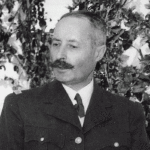
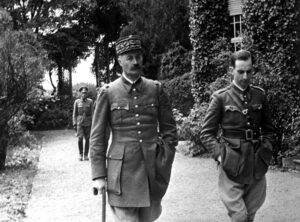 Henri Honoré Giraud was a French general and a leader of the Free French Forces during the Second World War until he was forced to retire in 1944. Giraud was born on January 18, 1879 the son of Louis and Jeanne (née Deguignand) Giraud. His father was a coal merchant. Born to an Alsatian family in Paris, Giraud graduated from the Saint-Cyr military academy and served in French North Africa. During World War I, Giraud was wounded and captured by the Germans, but managed to escape from his prisoner-of-war camp. It was the first time he escaped, but not the last. After World War I ended, Giraud returned to North Africa and fought in the Rif War. During that war, he was awarded the Légion d’honneur. The Légion d’honneur (or Legion of Honour) is the highest French order of merit, both military and civil. It was established in 1802 by Napoleon Bonaparte, and it has been retained by all later French governments and régimes.
Henri Honoré Giraud was a French general and a leader of the Free French Forces during the Second World War until he was forced to retire in 1944. Giraud was born on January 18, 1879 the son of Louis and Jeanne (née Deguignand) Giraud. His father was a coal merchant. Born to an Alsatian family in Paris, Giraud graduated from the Saint-Cyr military academy and served in French North Africa. During World War I, Giraud was wounded and captured by the Germans, but managed to escape from his prisoner-of-war camp. It was the first time he escaped, but not the last. After World War I ended, Giraud returned to North Africa and fought in the Rif War. During that war, he was awarded the Légion d’honneur. The Légion d’honneur (or Legion of Honour) is the highest French order of merit, both military and civil. It was established in 1802 by Napoleon Bonaparte, and it has been retained by all later French governments and régimes.
When World War II began, Giraud was a member of the Superior War Council. He strongly disagreed with Charles de Gaulle about the tactics of using armored troops that were planned. Giraud was made the commander of the 7th Army when it was sent to the Netherlands on May 10, 1940. He was able to delay German troops at Breda on May 13th. The badly depleted 7th Army was then merged with the 9th Army. While the troops were trying to block a German attack through the Ardennes, Giraud was at the front with a reconnaissance patrol when he was captured by German troops at Wassigny on May19th. A German court-martial tried Giraud for ordering the execution of two German saboteurs wearing civilian clothes, but he was acquitted and taken to Königstein Castle near Dresden, which was used as a high-security POW prison. He would be held there for two years.
Not one to just sit around, Giraud began carefully planning his escape. He learned German and memorized a map of the area. He painstakingly made a 150 feet rope out of twine, torn bedsheets, and copper wire, which friends had smuggled into the prison for him. Using a simple code embedded in his letters home, he informed his family of his plans to escape. I doubt if they were surprised, as it would not be the first time he escaped his captors. Finally on April 17, 1942, he was ready. Königstein Castle was built on a hilltop, with steep cliff on one side. After shaving off his moustache and covering his head with a Tyrolean hat to disguise himself, Giraud lowered himself down the cliff of the mountain fortress. He discretely travelled to Schandau where he met his Special Operations Executive (SOE) contact, who provided him with a change of clothes, cash, and identity papers. Thus began the series of tactics designed to get Giraud to the Swiss border by train. By now, the border guards had been informed of his escape and were on the alert for him. Giraud walked through the mountains until he was stopped by two Swiss soldiers, who took him to Basel. Eventually, he was able to slip into Vichy France, where he was finally able to make his identity known. He tried unsuccessfully to convince Marshal Pétain that Germany would lose, and that France must resist the German occupation. His views were rejected, but at least the Vichy government refused to return Giraud to the Germans. Returning him would have been a death sentence, because Hitler had ordered Giraud’s assassination upon being caught. Giraud went to North Africa via a British submarine, and joined the French Free Forces under General Charles de Gaulle. He eventually helped to rebuild the French army.
In January 1943, Giraud took part in the Casablanca Conference along with Charles de Gaulle, Winston Churchill, and Franklin D Roosevelt. Later in the same year, Giraud and de Gaulle became co-presidents of the French Committee of National Liberation, but Giraud lost support and retired in frustration in April 1944. After 
 the war, Giraud was elected to the Constituent Assembly of the French Fourth Republic. He remained a member of the War Council and was decorated for his escape. He published two books, “Mes Evasions” (My Escapes, 1946) and “Un seul but, la victoire”: Alger 1942–1944 (A Single Goal, Victory: Algiers 1942–1944, 1949) about his experiences. He died in Dijon on March 11, 1949.
the war, Giraud was elected to the Constituent Assembly of the French Fourth Republic. He remained a member of the War Council and was decorated for his escape. He published two books, “Mes Evasions” (My Escapes, 1946) and “Un seul but, la victoire”: Alger 1942–1944 (A Single Goal, Victory: Algiers 1942–1944, 1949) about his experiences. He died in Dijon on March 11, 1949.

 Brian Cratty is my sister-in-law, Jennifer Parmely’s partner and soulmate. Their relationship has blossomed and grown over the years, and Brian has become an important part of our family. He is there in the good times and in the bad, always lending a helping hand, wherever it is needed. That really falls right in line with several aspects of Brian’s character. Brian is a nature lover and spends a lot of time at the cabin he and Jennifer purchased on Casper Mountain. He loves to mountain bike and cross country ski off trail. For this reason, the cabin is where Brian likes to spend much of his time…year round. He like to wander around on the mountain, and in the summer, Brian and Jennifer can often be found cleaning up the forest. When I first heard that, I was surprised, but when you think about it, the wind blows all kinds of trash around, and the forest doesn’t somehow miss out on all that junk. If you want to be able to enjoy nature in the future, you have to help keep the place clean…right?
Brian Cratty is my sister-in-law, Jennifer Parmely’s partner and soulmate. Their relationship has blossomed and grown over the years, and Brian has become an important part of our family. He is there in the good times and in the bad, always lending a helping hand, wherever it is needed. That really falls right in line with several aspects of Brian’s character. Brian is a nature lover and spends a lot of time at the cabin he and Jennifer purchased on Casper Mountain. He loves to mountain bike and cross country ski off trail. For this reason, the cabin is where Brian likes to spend much of his time…year round. He like to wander around on the mountain, and in the summer, Brian and Jennifer can often be found cleaning up the forest. When I first heard that, I was surprised, but when you think about it, the wind blows all kinds of trash around, and the forest doesn’t somehow miss out on all that junk. If you want to be able to enjoy nature in the future, you have to help keep the place clean…right?
Brian is also a very good cook. It is a pastime he very much enjoys, and Jennifer doesn’t mind that either. Brian is retired, and Jennifer isn’t yet, so it’s nice that he can cook meals to be ready when she gets home. Brian is also a big movie buff. I’m not sure what his favorite movies are, but for many people, a nice dinner and a 
 movie night make up the perfect date night. And, after a busy day at work or taking care of other things at the house and cabin, you are ready to relax and enjoy a quiet evening. Brian also likes to puzzle in the winter and always has one going at their house. Puzzles are not my thing, but Brian finds puzzles to be very relaxing.
movie night make up the perfect date night. And, after a busy day at work or taking care of other things at the house and cabin, you are ready to relax and enjoy a quiet evening. Brian also likes to puzzle in the winter and always has one going at their house. Puzzles are not my thing, but Brian finds puzzles to be very relaxing.
Brian not only loves nature and the outdoors, but he loves bringing nature indoors too. Brian has a room that has been dubbed the “Plant Room,” and it is literally full of Brian’s plants. He has a true green thumb, and maybe I should have him stop by an touch my plants for me. I think they might perk up with the help of someone with a green thumb. He is one with nature.
As our family has been embracing family time once a month, with a family dinner, I have had a chance to see another side of Brian. Brian is a strategist, and he enjoys playing games. He and their oldest grandchild, 8 year old Reagan Parmely, have been playing games after dinner. Some of these games, like chess, are quite complicated, and Brian (who reminds me of my Uncle Bill Spencer, when we played Cribbage) patiently teaches 
 Reagan the game, but doesn’t give her the game. I don’t care what anyone says, when my Uncle Bill taught me to play Cribbage and didn’t give me the game, I was thankful, because when I did finally beat him…I did it honestly. The victory was real. There is just something to be said for teaching someone the game, versus giving them the game. I really respect that. Today is Brian’s birthday, Happy birthday Brian!! Have a great day!! We love you!!
Reagan the game, but doesn’t give her the game. I don’t care what anyone says, when my Uncle Bill taught me to play Cribbage and didn’t give me the game, I was thankful, because when I did finally beat him…I did it honestly. The victory was real. There is just something to be said for teaching someone the game, versus giving them the game. I really respect that. Today is Brian’s birthday, Happy birthday Brian!! Have a great day!! We love you!!
 When thinking of spies, our minds might logically think of James Bond 007 or some of the NCIS shows, but we somehow don’t think of women…at least not very often. Nevertheless, the truth is there are many women who are spies, and some of them were in the era of World War II. These women were gutsy. They faced danger defiantly. Jannetie “Hannie” Schaft was a Dutch resistance fighter during World War II. She could have done like so many others, and obediently taken the oath of loyalty to the Nazis. Her life would have gone on somewhat like it had before.
When thinking of spies, our minds might logically think of James Bond 007 or some of the NCIS shows, but we somehow don’t think of women…at least not very often. Nevertheless, the truth is there are many women who are spies, and some of them were in the era of World War II. These women were gutsy. They faced danger defiantly. Jannetie “Hannie” Schaft was a Dutch resistance fighter during World War II. She could have done like so many others, and obediently taken the oath of loyalty to the Nazis. Her life would have gone on somewhat like it had before.
Schaft was born in Haarlem, which is the capital of the province of North Holland. Her mother was Aafje Talea Schaft (née Vrijer), who was a Mennonite woman. Her father, Pieter Schaft was attached to the Social Democratic Workers’ Party. Schaft led a sheltered life, because her parents were very protective of her following the death of her older sister. Her sheltered upbringing did not affect her personality. She was as  bold and defiant as ever. When the Nazis wanted the people to swear allegiance to them, Schaff refused to do so. Instead, she joined Raad van Verzet, a resistance group with a communist ideology. I find it hard to think about communism being considered better than socialism, but many have considered it so. In her work for Raad van Verzet, Schaft spied on soldier activity, aided refuges, and sabotaged targets. She was very capable, and feared by many. Her work gained her the reputation as “the girl with the red hair.” While it was only a nickname, it would end up being her downfall.
bold and defiant as ever. When the Nazis wanted the people to swear allegiance to them, Schaff refused to do so. Instead, she joined Raad van Verzet, a resistance group with a communist ideology. I find it hard to think about communism being considered better than socialism, but many have considered it so. In her work for Raad van Verzet, Schaft spied on soldier activity, aided refuges, and sabotaged targets. She was very capable, and feared by many. Her work gained her the reputation as “the girl with the red hair.” While it was only a nickname, it would end up being her downfall.
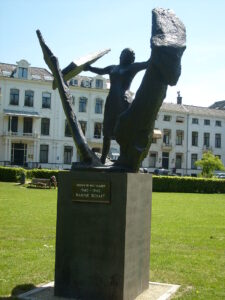
Having a reputation based on the color of your hair could be a good thing. All you have to do is color your hair, and you have the perfect disguise…right? Well, it did work for a time. Schaft colored her hair to cover up the red, but then she was captured by the Nazis. They had no idea who they had, but as her hair began to grow out they quickly figured it out. Once the Germans discovered that they had the legendary spy and resistance fighter in captivity, I’m sure she was brutally beaten and tortured for information. Schaft was then executed on April 17, 1945. Schaft was never a quitter and she wouldn’t quit now. Defiant to the end, she began taunting the soldier who shot her in the head, but merely grazed her. She said, “I can shoot better than that.” The second shot killed her, but not before leaving an everlasting impression on her captors and witnesses. Schaft was just 24 years old when she died. She was given a state funeral after the war, attended by Queen Wilhelmina and the Dutch royal family.
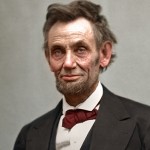 When I think of the assassination of President Abraham Lincoln, I think of John Wilkes Booth shooting the president at the Ford Theater. I don’t think about the assassination being a part of a conspiracy, but in fact, it was. It makes sense, I guess, because it isn’t even logical that someone could simply walk into the Ford Theater and to the President’s box and shoot him. Someone had to tell Booth where the president was going to be. Someone had to clear the way for Booth to get in. Someone had to remove more than just a president. This was a plot to change history.
When I think of the assassination of President Abraham Lincoln, I think of John Wilkes Booth shooting the president at the Ford Theater. I don’t think about the assassination being a part of a conspiracy, but in fact, it was. It makes sense, I guess, because it isn’t even logical that someone could simply walk into the Ford Theater and to the President’s box and shoot him. Someone had to tell Booth where the president was going to be. Someone had to clear the way for Booth to get in. Someone had to remove more than just a president. This was a plot to change history.
Lincoln conspirator Mary Surratt, who was born Mary Elizabeth Jenkins in 1823, was from Maryland. Before her acts of treason, Mary married John Harrison Surratt in 1840, when she was 17. They planed a life together an began buying massive amounts of land near Washington. Together, she and her husband had three children…John Jr, Isaac, Anna. Then After her husband’s death in 1864, when she was just 41, Mary moved to Washington DC, on High Street. To make some money, Mary rented part of her property…a tavern that her husband had built, to a man named John Lloyd, who was a retired police officer.
John Jr, Mary’s eldest son, met John Wilkes Booth during his time as a Confederate spy. Because of this connection, when Booth was plotting Lincoln’s assassination with his co-conspirators, he felt perfectly at home in Mary Surratt’s DC residence, which had by this time, become a boardinghouse. As plans progresses Mary Surratt also became involved with the shooting of Abraham Lincoln, through these men. She even asked Lloyd to help. Her request was that he have some “shooting-irons” ready for some men that would stop by later that night…the night that they murdered Abraham Lincoln. Although drunk, Lloyd was able to provide testimony of the appearance of Booth and a co-conspirator at Mary’s tavern. For her involvement, Mary Surratt was sentenced to death, she was the first woman to be executed by the United States Government. She asked of her executioners only to, “not let her fall” in a very small voice, but as she was hanged on July 7, 1865, her request was not honored.
Lewis Powell (some accounts say Paine) was nicknamed Doc as a child for his love of nursing animals back to health. Powell’s part in the conspiracy was to assassinate Secretary of State Seward. Seward was at home sick in bed the night of the assassination. That should have made his job easier. Powell gained entry to the home claiming to have medicine for Seward, but when he entered Seward’s room, he found Seward’s son, Franklin. They got into a scuffle when Powell refused to hand over the medicine. Powell beat Franklin so badly that he 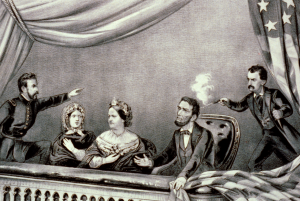
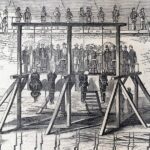 was in a coma for sixty days. He also stabbed Seward’s body guard before stabbing Steward several times. He was pulled off the Secretary by the body guard and two other members of the household. Seward survived, and Powell hid in a cemetery overnight. He was caught when he returned to Mary Surratt’s while she was being questioned by investigators. Powell attempted suicide while waiting for a verdict. He was convicted and hanged on July 7, 1865.
was in a coma for sixty days. He also stabbed Seward’s body guard before stabbing Steward several times. He was pulled off the Secretary by the body guard and two other members of the household. Seward survived, and Powell hid in a cemetery overnight. He was caught when he returned to Mary Surratt’s while she was being questioned by investigators. Powell attempted suicide while waiting for a verdict. He was convicted and hanged on July 7, 1865.
David Herold accompanied Powell to Seward’s house. Herold waited outside with the getaway horses. After Lincoln was assassinated, Herold managed to escape DC that same night, and met up with Booth. He was caught with Booth on April 26. Despite his lawyers many attempts to convince the court his client was innocent, Herold was convicted and was hanged on July 7, 1865.
George Atzerodt was given the task of killing Vice President Johnson. He went to the hotel Johnson was staying at, but was too afraid to kill the vice president. He went to the hotel bar and began drinking, hoping to get his courage up to do his part. Instead, he got very drunk and spent the night wandering the streets of Washington DC. He was arrested after the bartender reported his strange questions the night before. Atzerodt was convicted and hanged on July 7, 1865.
Edman Spangler was at Ford’s Theater the night of the assassination. Witness testimonies were conflicting as to his role in covering up Booth’s escape, but he allegedly took down the man trying to catch Booth before he fled. Spangler was found guilty and sentenced to six years in prison. He was pardoned in 1869 by President Johnson…which is odd considering the group tried to kill him. Spangler died in 1875 on his farm in Maryland.
Samuel Arnold was not involved in the April 14 assassination attempts. However, he was involved in earlier plots to kidnap Lincoln, and was arrested for his connections to Booth. Arnold was convicted and sentenced to life in prison. He was pardoned by President Johnson in 1869. He died in 1906 from tuberculosis.

It is unclear what role Michael O’Laughlen played in the actual assassination attempts. He was surely a conspirator to the group’s plans. He voluntarily surrendered on April 17. O’Laughlen was convicted and sentenced to life in prison. He died from yellow fever two years into his sentence.
It is unclear what part, if any, Mary’s son, John Surratt Jr played in the events of April 14. He claims to have been in New York that night, but he escaped to Canada and an international manhunt ensued for him. After his mother’s execution in July, he escaped to England. He then traveled to Rome and joined the group of soldiers protecting the Pope. It was while visiting Alexandria, Egypt that he was finally recognized and sent back to the United States. Unlike the other co-conspirators, Surratt was tried by a civilian court. On August 10 the trial ended with a hung jury and the charges were dropped in 1868. He died from pneumonia in 1916, and was the last living person with ties to the assassination attempt.
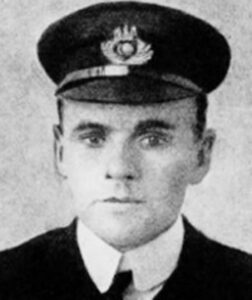 When RMS Titanic went down on April 15, 1912, after hitting an iceberg on April 14, 1912, it was a very different time than it is today. The sinking of a ship is a terrible tragedy, and often, there is so much panic. In 1912, there was a hard and fast rule in a shipwreck situation…women and children first. The only men allowed in the lifeboats were men needed as auxiliary seamen to man the lifeboats. Charles Herbert Lightoller was born March 30, 1874 into a family that had operated cotton-spinning mills in Lancashire since the late 18th century. His mother, Sarah Jane Lightoller (née Widdows), died of scarlet fever shortly after giving birth to him. His father, Frederick James Lightoller, emigrated to New Zealand when Charles was 10, leaving him in the care of extended family. Lightoller was a British Royal Navy officer and the second officer on board the RMS Titanic. He was also the most senior member of the crew to survive the Titanic disaster. Lightoller was the officer in charge of loading passengers into lifeboats on the port side. It was no easy task, because people were in a severe state of panic. Other seamen were launching lifeboats that were not filled to capacity, and since the ship did not have nearly enough lifeboats for all the people onboard. It is possible that orders that specifically said, “women and children only” may have been the reason so many lifeboats were launched before they were filled to capacity. I’m not sure if that is true or not, but if it was the case, it is a very sad revelation. It is also possible that as many as 400 more people could have been rescued, had the order been worded just slightly different. Nevertheless, Lightoller was following the orders as given to him, and not questioning the command.
When RMS Titanic went down on April 15, 1912, after hitting an iceberg on April 14, 1912, it was a very different time than it is today. The sinking of a ship is a terrible tragedy, and often, there is so much panic. In 1912, there was a hard and fast rule in a shipwreck situation…women and children first. The only men allowed in the lifeboats were men needed as auxiliary seamen to man the lifeboats. Charles Herbert Lightoller was born March 30, 1874 into a family that had operated cotton-spinning mills in Lancashire since the late 18th century. His mother, Sarah Jane Lightoller (née Widdows), died of scarlet fever shortly after giving birth to him. His father, Frederick James Lightoller, emigrated to New Zealand when Charles was 10, leaving him in the care of extended family. Lightoller was a British Royal Navy officer and the second officer on board the RMS Titanic. He was also the most senior member of the crew to survive the Titanic disaster. Lightoller was the officer in charge of loading passengers into lifeboats on the port side. It was no easy task, because people were in a severe state of panic. Other seamen were launching lifeboats that were not filled to capacity, and since the ship did not have nearly enough lifeboats for all the people onboard. It is possible that orders that specifically said, “women and children only” may have been the reason so many lifeboats were launched before they were filled to capacity. I’m not sure if that is true or not, but if it was the case, it is a very sad revelation. It is also possible that as many as 400 more people could have been rescued, had the order been worded just slightly different. Nevertheless, Lightoller was following the orders as given to him, and not questioning the command.
When all the lifeboats were launched, and the crew and remaining passengers knew the Titanic was surely going down, Lightoller and his fellow officers “all shook hands and said ‘Good-bye’” as they saw the last lifeboat off. Lightoller then dove into the frigid water from the bridge choosing to take his chances in the water, rather than the ship. Miraculously he managed to avoid being sucked down along with the massive ship. He clung to an nearby overturned lifeboat until the survivors were rescued. Lightoller was the last person pulled aboard the Carpathia and the highest-ranking officer to survive the wreck. One might imagine that surviving the greatest 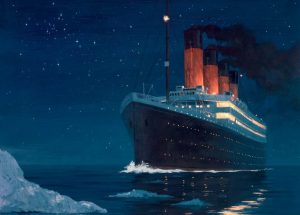 maritime disaster of the 20th century would have made Charles Lightoller give up the sea forever, but he was not a man to let a little thing like having a ship ripped out from under him end his adventures at sea. No, he was not even close to being done with the sea.
maritime disaster of the 20th century would have made Charles Lightoller give up the sea forever, but he was not a man to let a little thing like having a ship ripped out from under him end his adventures at sea. No, he was not even close to being done with the sea.
Following his survival of the shipwreck of Titanic, Lightoller went on to serve as a commanding officer of the Royal Navy during World War I, Lightoller was given command of his own torpedo boat. He was decorated twice for gallantry for his actions in combat, including sinking the German submarine UB-110. He emerged from the Great War as a full naval Commander. Lightoller retired after the war, but couldn’t leave the sea behind entirely. He and his wife bought their own boat in 1929. They called it Sundower and spent the next decade cruising around northern Europe and carrying out the occasional secret surveillance mission for the Admiralty when the Germans began preparing for war again.
Though Lightoller was retired by the time World War II started, he provided and sailed as a volunteer on one of the “little ships” that played a part in the 1940 Dunkirk evacuation. Rather than allow his motoryacht to be requisitioned by the Admiralty, he and his son Roger and a young Sea Scout named Gerald Ashcroft, crossed the English Channel in Sundowner to assist in the Dunkirk evacuation. The boat was licensed to carry just 21 passengers, but Lightoller and his crew brought back 127 servicemen. On the return journey, Lightoller evaded gunfire from enemy aircraft, using a technique described to him by his youngest son, Herbert, who had joined the RAF and been killed earlier in the war. Gerald Ashcroft later described the incident, “We attracted the attention of a Stuka dive bomber. Commander Lightoller stood up in the bow and I stood alongside the wheelhouse. Commander Lightoller kept his eye on the Stuka till the last second – then he sang out to me “Hard a port!” and I sang out to Roger and we turned very sharply. The bomb landed on our starboard side.” So, years after his first lifesaving event, Lightoller was once again saving lives in an emergency. Many people 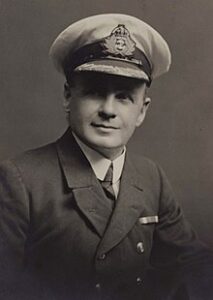 would be surprised to learn that he even had a yacht, but the sea was still a part of him. At the time of the evacuation Lightoller’s second son, Trevor was a serving Second Lieutenant with Bernard Montgomery’s 3rd Division, which had retreated towards Dunkirk. Unbeknownst to his dad, Trevor had already been evacuated 48 hours before Sundowner reached Dunkirk.
would be surprised to learn that he even had a yacht, but the sea was still a part of him. At the time of the evacuation Lightoller’s second son, Trevor was a serving Second Lieutenant with Bernard Montgomery’s 3rd Division, which had retreated towards Dunkirk. Unbeknownst to his dad, Trevor had already been evacuated 48 hours before Sundowner reached Dunkirk.
After the Second World War, Lightoller managed a small boatyard in Twickenham, West London, called Richmond Slipways, which built motor launches for the river police. Lightoller died of chronic heart disease on December 8, 1952, aged 78. He was a long-time pipe smoker, and he died during London’s Great Smog of 1952, which took the lives of many elderly people with breathing issues. His body was cremated, and his ashes were scattered at the Commonwealth “Garden of Remembrance” at Mortlake Crematorium in Richmond, Surrey.
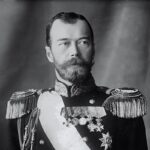
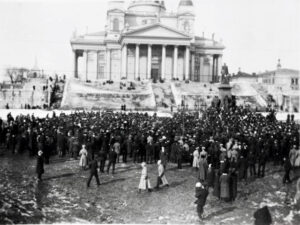 There are different kinds of governments, some good and some bad. The problem these days is that people are confused about which one is the best. On April 13, 1918, the people of Helsinki, Finland were not among the confused. They had lived under a capitalist government, and they had lived under a socialist government, and there was no doubt in their minds that they did not want to live in socialism any longer.
There are different kinds of governments, some good and some bad. The problem these days is that people are confused about which one is the best. On April 13, 1918, the people of Helsinki, Finland were not among the confused. They had lived under a capitalist government, and they had lived under a socialist government, and there was no doubt in their minds that they did not want to live in socialism any longer.
Finland had been under Russian rule since 1809. With the upheaval in Russia in 1917, which included the abdication of Czar Nicholas II in March and the rise to power of Vladimir Lenin and his radical socialist followers, the Bolsheviks, in November, Finland decided to declare its independence in December, 1917. Unfortunately, conflict broke out almost immediately between radical socialists, who were supporters of the Bolsheviks in Russia, and the anti-socialists within the government. In late January 1918, the radical socialist Red Guard launched a rebellion, terrorizing and killing civilians in their attempt to spark a Bolshevik-style revolution. It reminds me of the riots because of the left’s push to socialism in this country. The Whites (as government troops were known) under the command of Baron Karl Gustav Mannerheim found themselves in a bitter struggle to drive the Red Guard (as the Bolsheviks and socialists were known) out of Finland.
On April 3, 1918, German troops who had been sent by Kaiser Wilhelm II, landed in Finland to aid Mannerheim’s White army. Germany had made an agreement to support Finland and its newly declared parliamentary government. German troops, alongside Mannerheim and his force of 16,000 men, fought to take back control of Helsingfors (Helsinki) from the Red Guard, an army of Finnish supporters of the Russian Bolsheviks, on April 13, 1918. That victory was followed by another in Viborg by the end of the month. Another major victory by the Germans and the White Finns took place at Lahti on May 7, 1918. It was that battle that ended the Finnish civil war.
Germany’s close ties with the emerging Finnish government reached a new level in October 1918. Conservative forces in Finland decided to establish monarchal rule in the country, giving the throne to Frederick, a German prince, in the remaining weeks of World War I. However, Kaiser Wilhelm himself had abdicated by the time the Central Powers appealed for an armistice one month later and it seemed certain that the victorious Allies would not look kindly upon a German prince on the Finnish throne, so Frederick abdicated on December 14. The Treaty of Versailles, signed in June 1919, recognized Finland’s hard-won independence. That July, the Finnish parliament adopted a new republican constitution, and liberal Kaarlo J Stahlberg, was elected as the country’s first president.
Today, Finland is considered a republic with representative democracy. The public administration is composed of the highest elected bodies, state administration, local government, and the courts. The highest elected body is 
 made up of the parliament, the president, and the government. The current president of Finland is Sauli Niinistö, who has been president since March 1, 2012. The Parliament of Finland exercises the legislative powers while the executive power is exercised by the cabinet supervised by the premier who heads the government of Finland. The president heads the state and has powers to make a decision concerning some matters such as personal appointments and pardons.
made up of the parliament, the president, and the government. The current president of Finland is Sauli Niinistö, who has been president since March 1, 2012. The Parliament of Finland exercises the legislative powers while the executive power is exercised by the cabinet supervised by the premier who heads the government of Finland. The president heads the state and has powers to make a decision concerning some matters such as personal appointments and pardons.

 My sister-in-law, Jennifer Parmely is a Labor and Delivery nurse, and has been for about 40 years. I have no idea how many babies she has assisted in delivering, nor how many she has delivered herself, but I can imagine. Taking a wild guess, I would say between 20,000 and 50,000. That’s about the population of a small city. Now I could be off, but I don’t think so. I can’t say how many she has actually delivered, because they came before the doctor could get there, but I imagine there were some of those too. Jennifer has never wanted to be anything but a Labor and Delivery nurse. I have never seen anyone so focused. She knew what she wanted to do in high school and she has never waivered.
My sister-in-law, Jennifer Parmely is a Labor and Delivery nurse, and has been for about 40 years. I have no idea how many babies she has assisted in delivering, nor how many she has delivered herself, but I can imagine. Taking a wild guess, I would say between 20,000 and 50,000. That’s about the population of a small city. Now I could be off, but I don’t think so. I can’t say how many she has actually delivered, because they came before the doctor could get there, but I imagine there were some of those too. Jennifer has never wanted to be anything but a Labor and Delivery nurse. I have never seen anyone so focused. She knew what she wanted to do in high school and she has never waivered.
Of course, Jennifer, like everyone else, is more than her career. She is mom and grandma, or in her case, Oma. 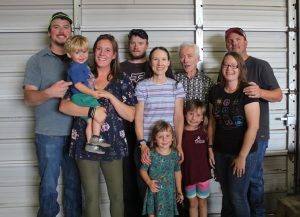 Jennifer had three sons, Barry Schulenberg, JD Parmely, and Eric Parmely, and now, she has four grandchildren, Reagan, Hattie, Bowen, and Maeve Parmely. She cherishes her family, which includes, daughters-in-law, Kelli Schulenberg and Ashley Parmely. Jennifer love getting together with all of her family, but she also loves taking each of her grandchildren for a day that is all their own. They often go shopping, and of course, that includes a toy of their choosing. They love going with her, and it is a treasured special time for her too.
Jennifer had three sons, Barry Schulenberg, JD Parmely, and Eric Parmely, and now, she has four grandchildren, Reagan, Hattie, Bowen, and Maeve Parmely. She cherishes her family, which includes, daughters-in-law, Kelli Schulenberg and Ashley Parmely. Jennifer love getting together with all of her family, but she also loves taking each of her grandchildren for a day that is all their own. They often go shopping, and of course, that includes a toy of their choosing. They love going with her, and it is a treasured special time for her too.
Another thing that Jennifer has never waivered in, is her health. Years ago, after having three children, Jennifer, like many mothers, had some extra weight to lose. She made the decision to get that weight off and get healthy, and she never waivered. Diet was a major part of her transformation, of course, but just as important was the strict exercise “routine” Jennifer had. I emphasize “routine” because, she never thought of it that way, exactly. Jennifer began to be an 
 energetic, fast-paced, “everything” exercise enthusiast…she hiked, did yoga, skied, every exercise machine she could at the gum, you name it, Jennifer probably tried it. Like most of us, there were forms of exercise she likes better than others, but she has never gone back to a sedentary lifestyle, and she has never stopped eating healthy…that has kept her healthy for many years now. Today is Jennifer’s 60th birthday, and well…she certainly doesn’t look 60. Years of healthy living have certainly paid off. Happy birthday Jennifer!! Have a great day!! We love you!!
energetic, fast-paced, “everything” exercise enthusiast…she hiked, did yoga, skied, every exercise machine she could at the gum, you name it, Jennifer probably tried it. Like most of us, there were forms of exercise she likes better than others, but she has never gone back to a sedentary lifestyle, and she has never stopped eating healthy…that has kept her healthy for many years now. Today is Jennifer’s 60th birthday, and well…she certainly doesn’t look 60. Years of healthy living have certainly paid off. Happy birthday Jennifer!! Have a great day!! We love you!!
 I think most of us have heard about the Louisiana Purchase, but I don’t know if I really ever knew the whole story. Maybe it was taught in school, but somehow I missed it. It really was one of the great surprises in diplomatic history.
I think most of us have heard about the Louisiana Purchase, but I don’t know if I really ever knew the whole story. Maybe it was taught in school, but somehow I missed it. It really was one of the great surprises in diplomatic history.
French Foreign Minister Charles Maurice de Talleyrand because he was the foreign minister to French Emperor Napoleon Bonaparte, was one of the most powerful men in the world. Talleyrand had convinced Napoleon that he could create a new French Empire in North America. The French had long had a rather weak claim to the vast area west of the Mississippi River known as Louisiana Territory. The Louisiana Territory was going to be his starting place for that power in North America. In 1800, Napoleon secretly signed a treaty with Spain that officially gave France full control of the territory. Then, Napoleon began preparing the French army to occupy New Orleans and bolster French dominion. President Thomas Jefferson heard about Napoleon’s plans in 1802. It was an alarming revelation, especially in light of Napoleon’s desire for world domination. having him in control of part of North America brought him a little close for comfort. Also, Jefferson knew that the United States would need to expand 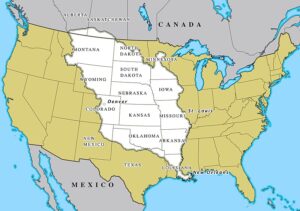 westward beyond the Mississippi, but she could never challenge the French militarily for the territory. Jefferson’s minister in France, Robert Livingston, had a lot riding on his ability to negotiate an agreement whereby Napoleon would give the United States control of New Orleans, the gateway to the Mississippi River.
westward beyond the Mississippi, but she could never challenge the French militarily for the territory. Jefferson’s minister in France, Robert Livingston, had a lot riding on his ability to negotiate an agreement whereby Napoleon would give the United States control of New Orleans, the gateway to the Mississippi River.
Livingston’s initial attempts at reaching a diplomatic agreement failed, and the situation looked bleak, but then in early 1803, Jefferson sent his young Virginia friend James Monroe to Paris to assist Livingston. By that time Napoleon’s situation in Europe had changed for the worse. He had stirred things up enough that war between France and Great Britain seemed imminent. Napoleon could no longer spare the military resources needed to secure control of Louisiana Territory. Rather than lose the territory to a British takeover, Napoleon reasoned it would be better to sell Louisiana to the Americans.
So, in the end, it wasn’t the expert negotiating skills of Livingston and Monroe, but rather Napoleon’s need to unload the territory. On this day April 11, 1803, much to Livingston’s surprise, the French minister coolly asked, “What will you give for the whole?” He was offering no the whole of New Orleans, but the whole of Louisiana Territory. Livingston and Monroe knew that for whatever reason, they were being offered “the moon” and they 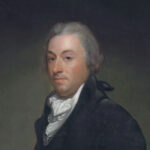 should jump on the opportunity. Livingston and Monroe discussed France’s proposed cost for the territory. Several weeks later, on April 30, 1803, the American emissaries signed a treaty with France for a purchase of the vast territory for $11,250,000.
should jump on the opportunity. Livingston and Monroe discussed France’s proposed cost for the territory. Several weeks later, on April 30, 1803, the American emissaries signed a treaty with France for a purchase of the vast territory for $11,250,000.
The move was a good one for Napoleon too, because a little more than two weeks later, Great Britain declared war on France. Napoleon had to abandoned his dreams of a North American empire with the sale of the Louisiana Territory, but he also achieved a goal that he thought more important. “The sale [of Louisiana] assures forever the power of the United States,” Napoleon later wrote, “and I have given England a rival who, sooner or later, will humble her pride.”
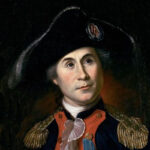 Pirates, as we know them, are criminals who hijack ships to rob them of anything of value on board. Sometimes however, a “pirate” can actually be working for the government, or at least on behalf of the government. Such was the case on April 10, 1778, when Commander John Paul Jones and his crew of 140 men aboard the USS Ranger set sail from the naval port at Brest, France. They headed toward the Irish Sea. Their mission was to begin raids on British warships. This was the first mission of its kind during the Revolutionary War. These missions weren’t called piracy, but when we compare the two acts, they pretty much were piracy. They just weren’t for personal gain, but rather for the good of the country and the war effort. No one was safe, not passengers and certainly not the crew.
Pirates, as we know them, are criminals who hijack ships to rob them of anything of value on board. Sometimes however, a “pirate” can actually be working for the government, or at least on behalf of the government. Such was the case on April 10, 1778, when Commander John Paul Jones and his crew of 140 men aboard the USS Ranger set sail from the naval port at Brest, France. They headed toward the Irish Sea. Their mission was to begin raids on British warships. This was the first mission of its kind during the Revolutionary War. These missions weren’t called piracy, but when we compare the two acts, they pretty much were piracy. They just weren’t for personal gain, but rather for the good of the country and the war effort. No one was safe, not passengers and certainly not the crew.
Commander John Paul Jones, will always be remembered as one of the most daring and successful naval commanders of the American Revolution. John Paul Jones was born under the simple birth name of John Paul on July 6, 1747, in a small cottage in Arbigland, Scotland, to John Paul Sr and Margaret Paul. His dad was a gardener, but Jones found his calling not in gardening, but at sea. He earned an apprenticeship with the British Merchant Marine at the age of 13. His seafaring adventures would eventually take him to America and, like many other sailors before him, Jones got involved in the slave trade. However, the realities of human trafficking repulsed him, and he returned to shipping cargo duties.
1773 found Jones in a very difficult situation. He murdered a mutinous sailor on the island of Tobago in self-defense…which is not really murder, but maybe in those days things were different. Whatever the case may be,  Jones believed he wouldn’t receive a fair trial, so he fled to America. It was there he added the last name “Jones” to conceal his identity. Jones needn’t have worried, because the American colonies were too busy stoking the flames of war with the British to have noticed his past. When the American Revolution broke out in 1775, Jones who remembered Britain’s cruel treatment of the Scots, decided that he would side with the colonists. He joined the new Continental Navy.
Jones believed he wouldn’t receive a fair trial, so he fled to America. It was there he added the last name “Jones” to conceal his identity. Jones needn’t have worried, because the American colonies were too busy stoking the flames of war with the British to have noticed his past. When the American Revolution broke out in 1775, Jones who remembered Britain’s cruel treatment of the Scots, decided that he would side with the colonists. He joined the new Continental Navy.
Jones began skillfully attacking British ships off the American coastline and expanded his operations from there. He first captained the USS Providence, set sail to Nova Scotia, and started capturing British vessels. Next, he took command of Ranger and set course to France, where his vessel was saluted by the French Admiral La Motte Piquet. It was the first American vessel ever to be recognized by a foreign power…pretty good for a new country. In 1779 Jones made history as one of the greatest naval commanders of the Revolutionary War. His shining moment came when, while En route to raid British shipping, Jones’ warship, Bon Homme Richard, came head to head with the more powerful English warship HMS Serapis off the North Sea. The battle went on for three hours between the two vessels. At one point, Jones slammed Bon Homme into Serapis, strategically tying them together. As the story goes, when the British asked if Jones was ready to surrender, he famously responded, “I have not yet begun to fight!” Inspired by Jones’ bravado, one of his naval officers tossed a grenade onto Serapis. The severe damage caused the British to surrender in the end. Jones’ became an 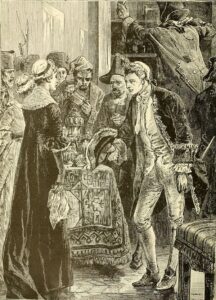 international hero. After the war ended, the Continental Navy dissolved due to lack of funds. Jones was dubbed the father of the United States Navy.
international hero. After the war ended, the Continental Navy dissolved due to lack of funds. Jones was dubbed the father of the United States Navy.
Jones retired to Paris, but his health took a turn for the worse. On July 18, 1792, he was found dead in his apartment at the age of 45. He was laid to rest in a French cemetery, but the plot of land was later sold and forgotten. Over one hundred years would pass before the United States was able to recover Jones’ remains with the help of French officials. After much research, his body was located and exhumed, and to the surprise of French pathologists, Jones’ body was excellently preserved. His initial autopsy concluded that the cause of his death was kidney failure, with later clinical studies believing his condition was exacerbated by a heart arrhythmia. The United States received Jones’ remains and buried them in a tomb inside the chapel of the U.S. Naval Academy in Annapolis, Maryland.
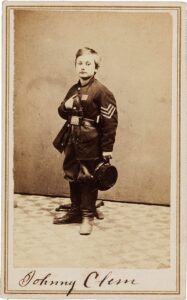
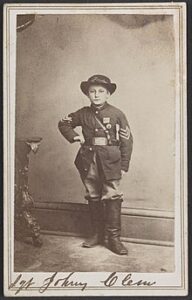 During the Civil War, military personnel was often short supply, and so, soldiers weren’t always adults. Sometimes, children enlisted, and sometimes they were “hired” on as messengers, scouts, and servants. They also might be hired on as musicians, such has drummers or buglers. On ships, children carried powder to fire the cannons, earning the nickname “powder monkeys.” In fact, one in five soldiers during the Civil War was under the age of 18.
During the Civil War, military personnel was often short supply, and so, soldiers weren’t always adults. Sometimes, children enlisted, and sometimes they were “hired” on as messengers, scouts, and servants. They also might be hired on as musicians, such has drummers or buglers. On ships, children carried powder to fire the cannons, earning the nickname “powder monkeys.” In fact, one in five soldiers during the Civil War was under the age of 18.
One such musician was Drummer John Joseph Klem. A popular legend suggests that Klem served as a drummer boy with the 22nd Michigan at the Battle of Shiloh. Legend has it that Klem came very near to losing his life when a fragment from a shrapnel shell crashed through his drum, knocking him unconscious and that subsequently his comrades, who found and rescued him from the battlefield, nicknamed Klem “Johnny Shiloh.” Klem slayed enemies in the Battle of Chickamauga…shooting a Confederate officer. Though Klem was only 10 years old, the Union made him a sergeant. Now imagine taking orders from a 10 year old sergeant.
Klem was born on August 13, 1851, to Roman and Magdalene Klem. His mother was killed crossing the railroad tracks when he was just 9 years old. As devastating as that was, his father’s second marriage was worse. John did not get along with his stepmother, and I suppose that could have contributed to his wanderlust spirit. He attended school in Newark, but often skipped school so he could drill as a drummer boy with a local unit…Company H, 3rd Ohio Volunteer Infantry. Like many people of that time, Klem felt strongly about the Civil War, but it was probably unusual for such a young boy to feel that way. Most likely the main factor the problems with his stepmother, making life at home unpleasant. His relatives joining up was probably another factor.
Motivating Klem was the fact that many of his relatives had enlisted in the army. He also deeply admired the president. In fact, he so admired President Lincoln that he changed his middle name to Lincoln. Because of his young age, recruiters turned Klem down when he tried to enlist. Several regiments passed through Newark on the way to the War. Klem immediately went to each and tried to join up, but each time he was turned down because of his age. He tried a new tactic, and traveled by train to try to enlist. That failed too, because he was always recognized by a friend or relative and sent home. Finally, Klem just ran away from home, to join the Army in 1861, at the age of 9. He finally got far enough away from home that they let him stay. Even then, he didn’t really enlist, because he was still too young. They allowed him to join the Michigan unit because they knew he would not give up until somebody let him join. When he offered his services as drummer to a company commander of the Third Ohio Volunteer Regiment, the captain looked him over and said he wasn’t “enlisting infants.” Johnny then tried to join the Twenty-second Michigan Regiment and was refused. Finally, he simply “went along with the regiment just the same, as a drummer boy, and though not on the muster roll, drew a soldier’s pay of thirteen dollars a month.” His pay was contributed by officers of the regiment.
At some point, Johnny Klem became Johnny Clem, although I am not sure just when. When Johnny Clem enlisted in the Army, legally or not, his intention was to stay. He might have been just a drummer boy at first, but when the shell hit his drum, he was not scared. Over the years of his service, he proved himself to be an invaluable member of the unit. He gained fame for his bravery on the battlefield, and became the youngest soldier ever to achieve the rank of sergeant, and I expect that record still stands. Clem retired from the United States Army in 1915, having attained the rank of brigadier general in the Quartermaster Corps. At the time of his retirement, he was the last veteran of the American Civil War still on duty in the US Armed Forces. By 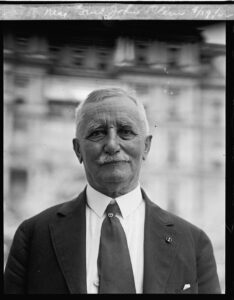
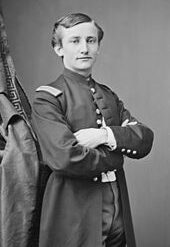 special act of Congress on August 29, 1916, he was promoted to major general one year after his retirement.
special act of Congress on August 29, 1916, he was promoted to major general one year after his retirement.
Clem was married twice. He first married Anita Rosetta French in 1875, and after her passing in 1899, he met and married Bessie Sullivan of San Antonio in 1903. Sullivan was the daughter of a Confederate veteran. Clem enjoyed that fact, and often said, that he was “the most united American” alive. Clem was the father of three children. After his retirement in 1915, Clem lived in Washington DC before returning to San Antonio, Texas. Just as he had as a child on the battlefield, Clem defied the odd, living a long and healthy life. He died in San Antonio at the age of 85 on May 13, 1937, and was buried in Arlington National Cemetery in Arlington County, Virginia.

